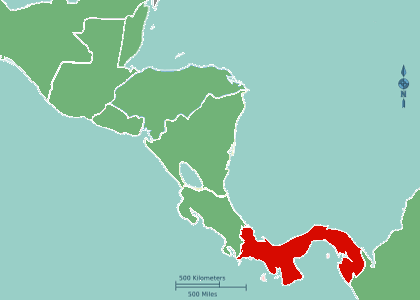
Circle the area on this map

A. The Atlantic entrance is at the northeast end of the canal and the Pacific entrance is at the southeast end. Last year the canal operators made large ships carry less cargo because the drought had reduced water levels.
B. France started building the canal in 1881 but stopped because of engineering problems and the deaths of an estimated 22,000 workers from disease and accidents. The United States took over the project in 1904.
C. The earliest mention of a canal across the Isthmus of Panama occurred in 1534, when the king of Spain ordered a survey for a route to ease shipping between Peru and Spain. The English considered it in 1668. Thomas Jefferson proposed it in 1788. France began its attempt after it built the Suez Canal.
D. The Suez Canal stretches 120 miles south from the Mediterranean Sea to the Red Sea. It is more than twice as long as the 51-mile Panama Canal, but the Suez Canal is at sea level and has no locks. In Panama, ships must be raised 85 feet above sea level to cross the middle of the canal before be lowered at the other end.